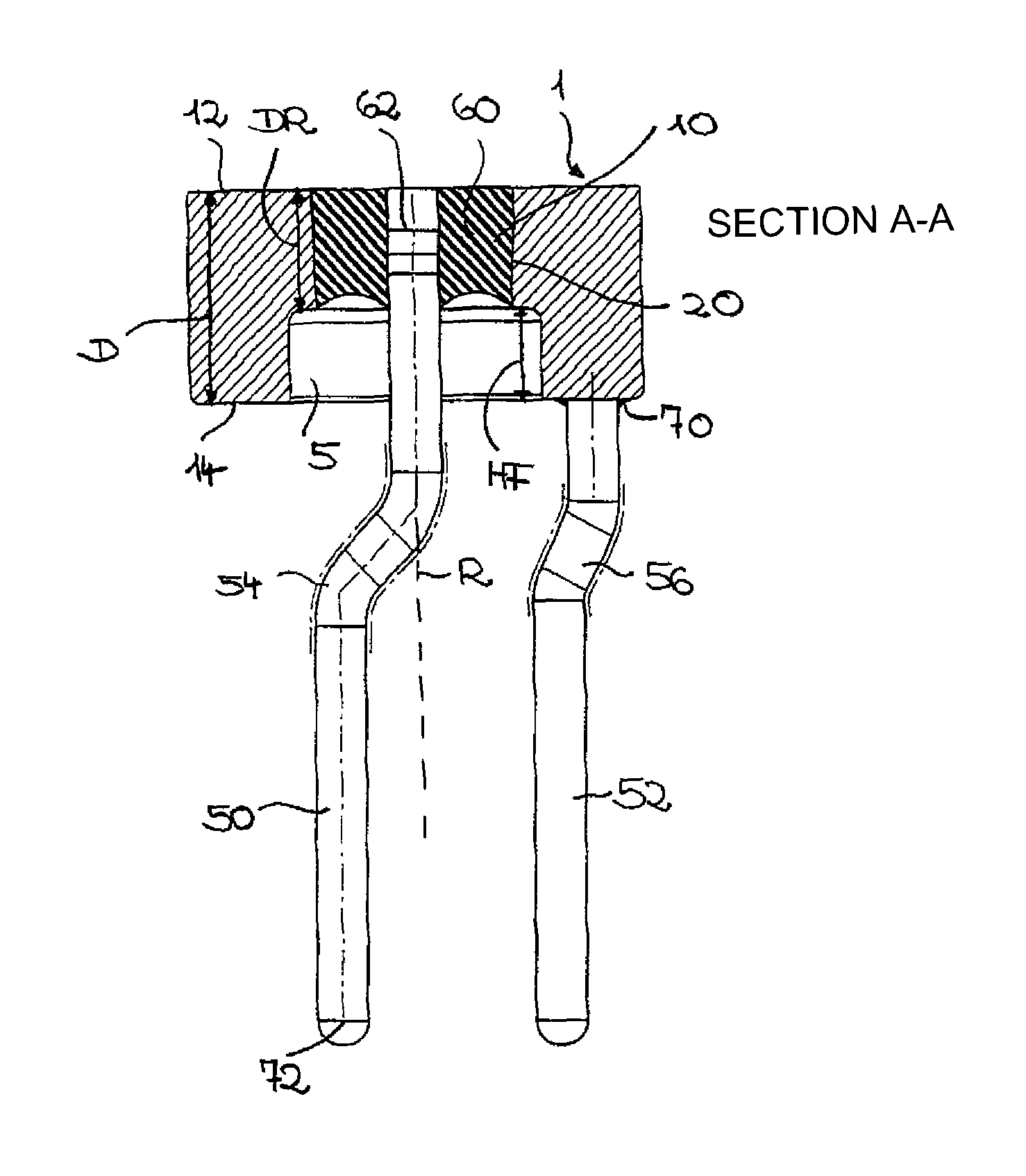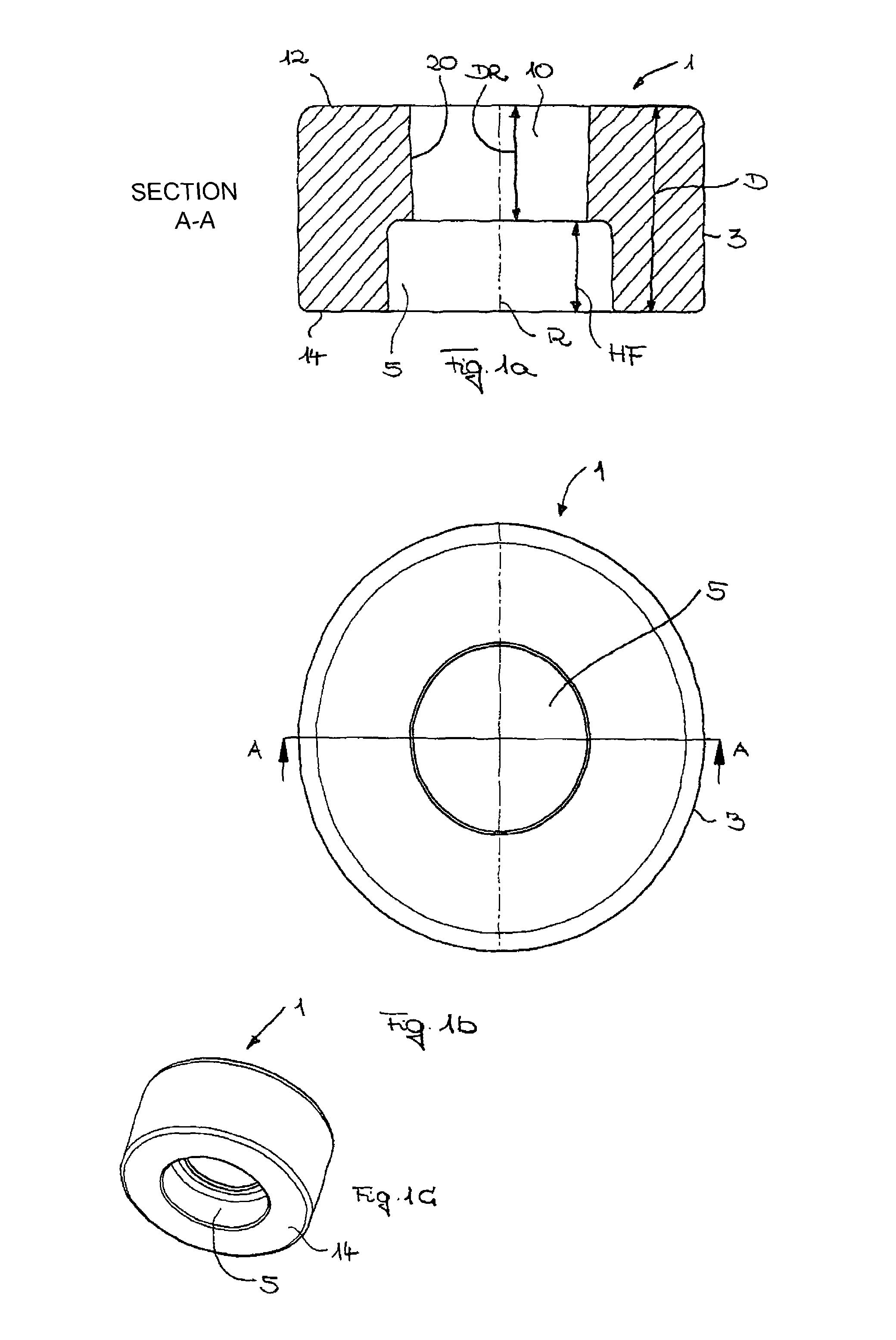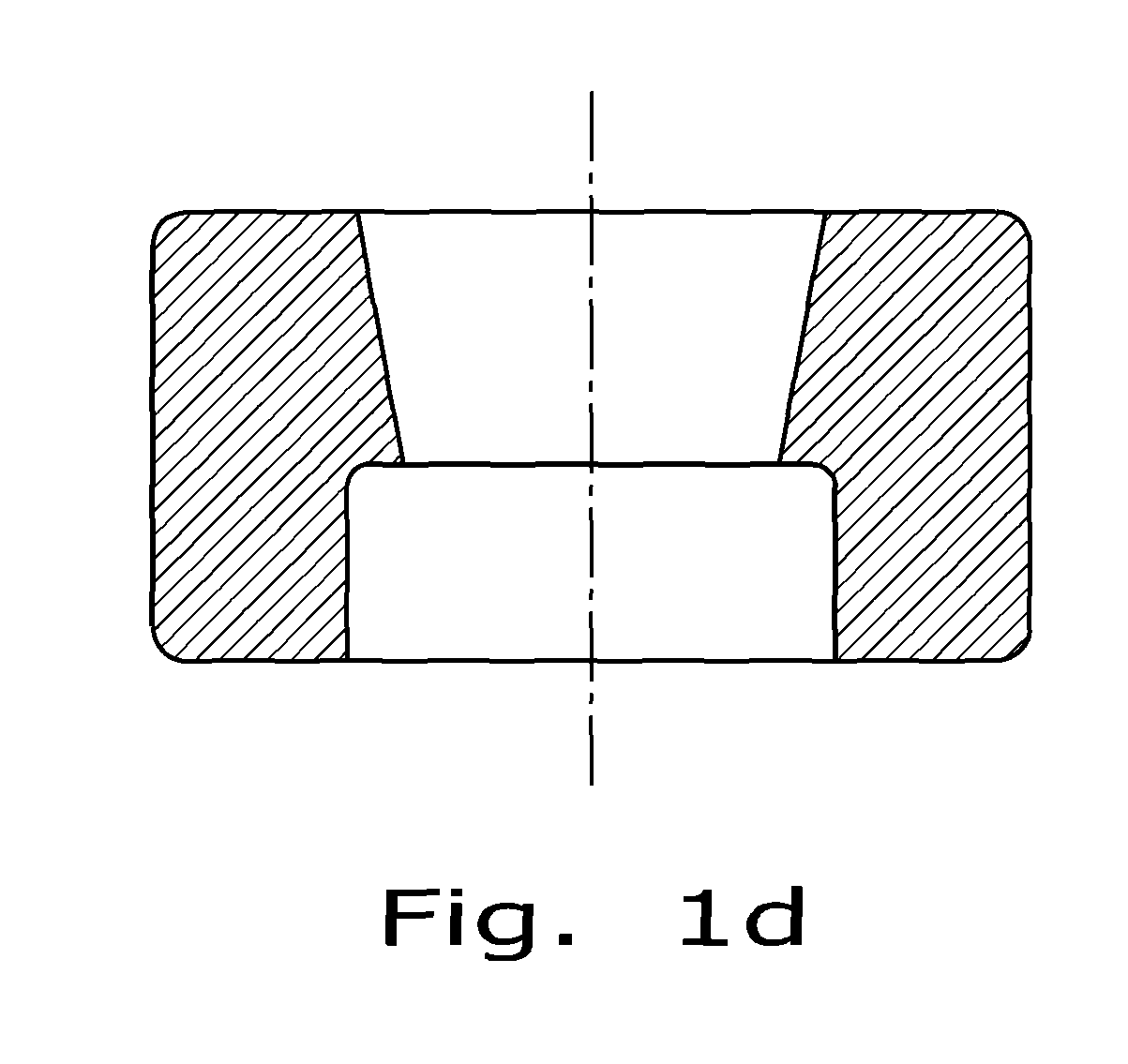Ring-shaped or plate-like element and method for producing same
a plate-like element and ring-type technology, applied in the direction of forging/pressing/hammering apparatus, electric fuzes, handling devices, etc., can solve the problems of weakening of glazing and large amount of material waste, and achieve the effect of reducing the thickness of the plate-like element and being easy to produ
- Summary
- Abstract
- Description
- Claims
- Application Information
AI Technical Summary
Benefits of technology
Problems solved by technology
Method used
Image
Examples
Embodiment Construction
[0054]Referring now to the drawings, and more particularly to FIGS. 1a-1c, there is shown a ring-shaped or plate-like formation or element according to the present invention which essentially is utilized as the base body for a metal-sealing material-feedthrough. As shown in the top view in FIG. 1b, ring-shaped or plate-like element 1 has essentially circular outer contour 3. Ring-shaped or plate-like body 1 is produced, for example, by a reshaping process, such as a cold-forming process, for example from a wire. Hereby, a piece is first cut from the wire and is subsequently transformed through a reshaping process, for example through compression into the spherical or circular form illustrated in FIG. 1b in a top view and FIG. 1c three-dimensionally from backside 14.
[0055]Following this, relief region 5 is provided into reshaped component 1 by means of a punch. When providing the relief region with a punch the reshaped material surrounds the punch.
[0056]The sequence of the process st...
PUM
| Property | Measurement | Unit |
|---|---|---|
| thickness | aaaaa | aaaaa |
| thickness | aaaaa | aaaaa |
| thickness | aaaaa | aaaaa |
Abstract
Description
Claims
Application Information
 Login to View More
Login to View More - R&D
- Intellectual Property
- Life Sciences
- Materials
- Tech Scout
- Unparalleled Data Quality
- Higher Quality Content
- 60% Fewer Hallucinations
Browse by: Latest US Patents, China's latest patents, Technical Efficacy Thesaurus, Application Domain, Technology Topic, Popular Technical Reports.
© 2025 PatSnap. All rights reserved.Legal|Privacy policy|Modern Slavery Act Transparency Statement|Sitemap|About US| Contact US: help@patsnap.com



